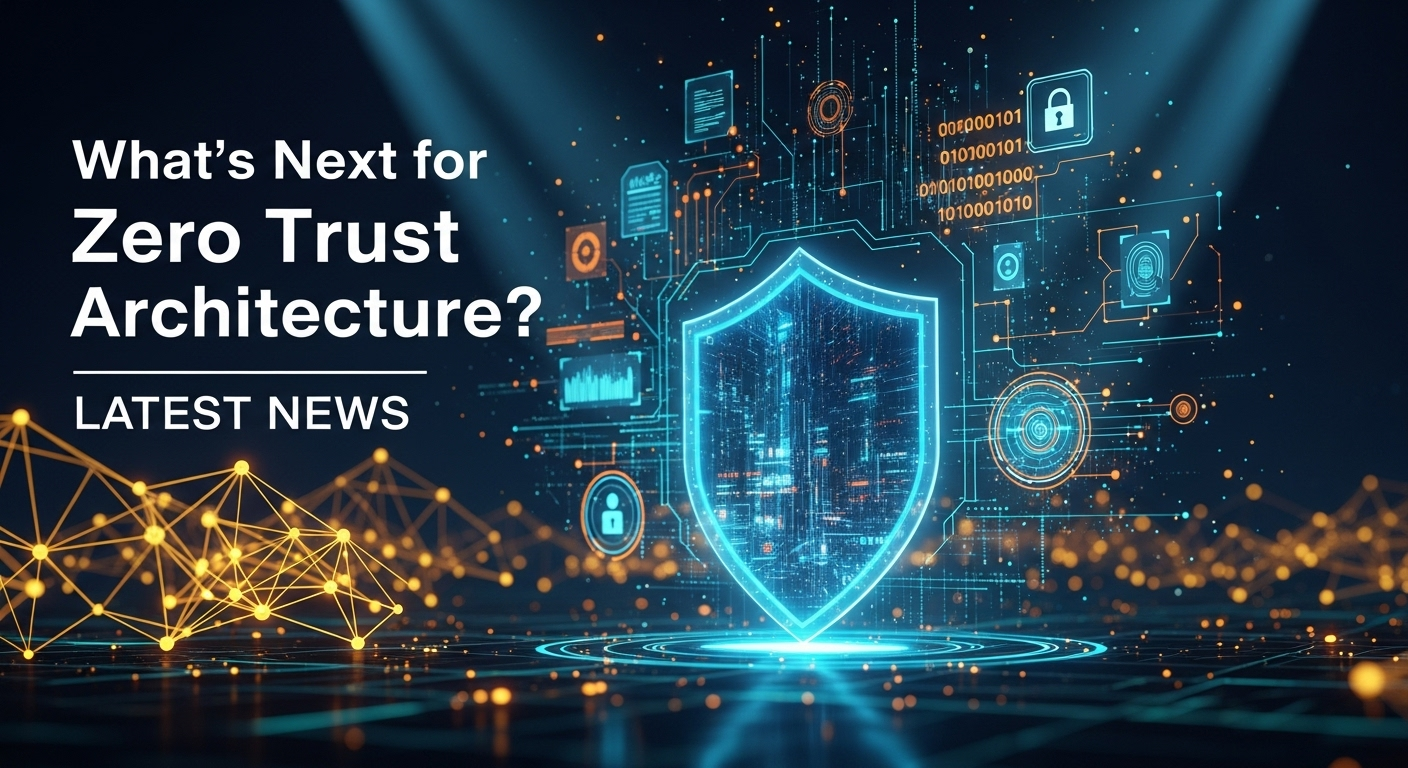In an era where digital perimeters have all but dissolved, the traditional "trust but verify" security model is obsolete. The relentless wave of sophisticated cyberattacks, coupled with the rise of remote work and cloud-native applications, has forced a paradigm shift towards a more resilient framework: Zero Trust. This model, built on the simple yet powerful mantra of "never trust, always verify," is no longer a futuristic concept but a present-day necessity. As organizations navigate this new reality, staying updated on the zero trust architecture latest news is not just an IT concern—it's a core business strategy for survival and growth. This article delves into the latest developments, emerging trends, and the exciting future that lies ahead for Zero Trust. The Evolving Threat Landscape: Why Zero Trust is No Longer Optional The digital world has fundamentally changed, and our security models must evolve in lockstep. The old castle-and-moat approach, where a strong perimeter defense was deemed sufficient, is dangerously outdated. Today's "castle" has a thousand doors and windows open to the public internet—cloud services, mobile devices, IoT sensors, and a distributed workforce. Attackers are no longer just trying to breach the outer walls; they are already inside, or they are exploiting the trusted connections that are essential for modern business operations. This new reality is defined by a more sophisticated and persistent class of threats. Ransomware-as-a-service (RaaS) has democratized cybercrime, allowing less-skilled actors to launch devastating attacks. Supply chain attacks, like the infamous SolarWinds breach, demonstrate how compromising a single trusted vendor can lead to a catastrophic ripple effect across thousands of organizations. Lateral movement—where an attacker gains an initial foothold and then moves freely within the network—is the primary method used to escalate privileges and exfiltrate data. It is in this context that Zero Trust architecture becomes an imperative. It fundamentally assumes that no user or device, whether inside or outside the network, should be trusted by default. Every single access request must be rigorously authenticated, authorized, and encrypted before being granted. This approach directly counters the modern threat actor's playbook by eliminating the concept of a trusted internal network and drastically limiting the potential for lateral movement. Adopting Zero Trust is no longer a question of if, but how quickly an organization can make the transition. Core Pillars of Modern Zero Trust: Beyond the Buzzwords While "never trust, always verify" is a great summary, a robust Zero Trust architecture is built upon several interconnected technical pillars. It’s an integrated strategy, not a single product. The latest advancements are focused on refining and integrating these pillars to create a seamless and dynamic security posture. The focus has decisively shifted from a network-centric view to an identity-centric one, where the user and device identity become the new, dynamic perimeter. This identity-first approach means that security policies are no longer tied to a static IP address or a physical location. Instead, they are attached to the identity of the user and the context of their access request. This context includes a multitude of signals: the health and compliance of their device, their geographic location, the time of day, and the specific application or data they are trying to access. The goal is to grant the least privileged access necessary for a user to perform their task, for the shortest duration possible. To achieve this granular and dynamic control, modern Zero Trust strategies are coalescing around three critical and continuously evolving pillars. These are not separate silos but components of a cohesive whole, powered by automation and rich analytics. Understanding how they interact is key to building a successful and future-proof implementation. Identity as the New Perimeter The very foundation of Zero Trust is robust Identity and Access Management (IAM). If you cannot be certain who a user is, you cannot make any trusted decisions about what they should be allowed to access. Modern IAM goes far beyond a simple username and password. It requires strong, phishing-resistant Multi-Factor Authentication (MFA) as a baseline for all users—employees, contractors, and partners alike. The latest trend is the move towards passwordless authentication using biometrics or FIDO2 security keys, which significantly reduces the attack surface associated with stolen credentials. Furthermore, the Principle of Least Privilege (PoLP) is enforced with surgical precision. Instead of granting broad access to entire network segments, Zero Trust Network Access (ZTNA) solutions grant access only to specific applications or resources. This is often described as a "segment of one." If a user's account is compromised, the attacker's access is limited to only the handful of applications that the user was explicitly authorized for, rather than the entire corporate network. This drastically contains the blast radius of any potential breach. Micro-segmentation and Granular Control Once a user’s identity is verified, micro-segmentation comes into play. Think of it as creating secure, isolated rooms within your castle rather than just guarding the main gate. Traditionally, internal networks were flat, meaning once an attacker was inside, they could move laterally with ease to discover and compromise high-value assets like domain controllers or databases. Micro-segmentation breaks down the network into small, granular zones—sometimes as small as a single workload or application. The latest news in this area involves the use of software-defined policies and AI to automate the creation and management of these segments. Instead of manually configuring complex firewall rules and VLANs, security teams can now define policies in plain language, such as "The HR application can only talk to the payroll database, and only HR employees can access it." The underlying network fabric then automatically enforces these rules, regardless of where the workloads are physically located—on-premises, in the cloud, or in a hybrid environment. This dynamic and automated approach is essential for securing modern, ephemeral cloud-native environments. Continuous Verification and Analytics The “always verify” part of the mantra is where continuous monitoring and advanced analytics become critical. A user who was trusted a minute ago might not be trustworthy now. Perhaps their device has been infected with malware, or their behavior suddenly deviates from established





